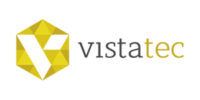How to Navigate Multilingual Challenges for SaaS Companies
Software as a Service (SaaS) has become an integral part of our everyday lives, and the market is growing. The global SaaS market is projected to grow from $273.55 billion to $908.21 billion by 2030 (a CAGR of 18.7%). This high growth rate presents new opportunities for companies ready for international expansion. Companies that have expanded globally report an average annual revenue growth of 13%.
However, successful global expansion requires a localization approach with a robust multilingual strategy. Text translation alone doesn’t create an engaging SaaS experience. To develop an intuitive user experience, it’s essential to understand the benefits of SaaS localization and the multilingual challenges that SaaS companies face.
The Benefits of SaaS Localization
SaaS is changing the way organizations work. As a result, businesses now spend 20% more on these technologies than they did just a year ago. SaaS products are ideal for global expansion since they’re distributed online and streamline daily business and personal tasks. However, your expansion is less likely to be successful if you fail to adapt your product to meet the specific linguistic and cultural requirements of the regions you serve.
SaaS localization is the process of adapting your application for different markets. It includes accurate translation and changing text, images, and content elements as needed to improve clarity and make them culturally appropriate. When strategizing your international expansion, localization can benefit your business substantially. Consider:
- Improved User Engagement: SaaS software is used in everyday tasks that streamline business workflows. The features are easier to use when your software accurately utilizes users‘ language and cultural context.
- Increased Conversion Rates: Research shows that 87% of consumers won’t buy from an English-only website. By adopting an effective multilingual strategy, you can present a product that will adequately serve a larger target audience.
- Strengthened Regional Brand Presence: By incorporating the nuances of various regions into your product, your brand is recognized as one that values diversity and customer satisfaction. When you meet the needs of different markets, you become the go-to brand for dependable and engaging service.
- Scalability: A good SaaS localization strategy will help you develop a repeatable process to grow your business across multiple regions.
Five Multilingual Challenges for SaaS Companies to Overcome
It’s easy to understand the benefits of a strong multilingual SaaS international growth strategy. However, you’ll find substantial challenges when adapting products and services to meet an unfamiliar region’s specific cultural, linguistic, and regulatory requirements. Five common—and significant—challenges are:
1. Translation Quality
Effective translation for SaaS software goes beyond simply translating exact text from one language to another. To make your software widely usable and engaging for your target audience, you need to make sure translations are of good quality, and the correct terminology is used throughout the interface. Accurate translation that maintains the intended meaning may require altering the wording of phrases and changing imagery and layouts.
Translating from English to Greek or Swedish can substantially increase the string length of a single word. Similarly, left-to-right scripts can look considerably different when altered to fit a language that uses right-to-left layouts. Translation can change your entire UI. These changes must be considered when addressing your application’s user-friendliness.
2. Date and Time Formats
SaaS software can streamline workflows, schedule events, and conduct various business activities. So it comes as little surprise that accurate times and dates are crucial in these applications. However, dates and times are formatted differently around the world.
While you may be accustomed to displaying the month before the day, some countries display the day first. Failure to get the format right when you roll out your software in a new region could lead to disastrous user misunderstandings. Even if you clearly state how your dates are listed, forcing users to change such an ingrained habit substantially compromises the useability of your software.
Poor planning for time layout can have a similar effect. While some countries use 12-hour split times accompanied by the a.m. or p.m. identifier, others use a 24-hour clock. Getting these details right is essential to developing a user-friendly product that will meet customers‘ needs.
3. Pricing
Pricing your products in a new region requires awareness of different currencies, customer needs and preferences, and an understanding of various income levels. While pricing across the U.S. likely allows you to bundle and price packages uniformly, you’ll need to consider regional differences when expanding internationally.
To avoid alienating new customers immediately:
- Research the currencies used in the regions you intend to include in your expansion.
- Prepare to quote prices in different currencies and develop subscription packages based on user needs.
- Investigate the services provided by similar companies to see if your product is missing a critical feature that aligns with workflows in a specific region or if your services should be bundled differently.
Netflix provides an excellent example of pricing localization. With over half of their revenue generated internationally, the company goes to great lengths to satisfy an international audience. Alongside producing films in multiple languages, Netflix localizes pricing by quoting prices in different currencies and differentiating subscription fees based on viewer location.
4. Images and Video
Videos and images are valuable in helping users understand your SaaS product. However, these communications aren’t universal. The same image can convey different messages in various cultures. Colors can also have contrasting meanings in different regions. Getting these details wrong can mean your images seem offensive or irrelevant. That shows your audience that you didn’t create the content for them.
Visuals, including icons, graphics, images, and photos, should be culturally relevant. Videos should follow the same guidelines and include subtitles and voice-overs in the target language. Often, symbols will need alterations to share the desired message. SaaS companies can expect to make several design changes to produce accurate images for a new region.
5. Multilingual Customer Service
Multilingual customer service is an area that even seasoned professionals forget. More than getting your software right is needed to ensure ongoing success. Customer service is a critical part of customer satisfaction and is the direct connection between your customers and your business. Imagine how your carefully researched, well-localized SaaS solution delights your target audience until they reach a technical speed bump. Since the customer has enjoyed using the product up to this point, they expect customer service to resolve the problem quickly.
Now, imagine what happens when your customer service team only speaks English. While service representatives could attempt to use machine translation, the experience will be far from seamless for your previously happy customer. Misunderstandings are frustrating. Instead of quickly resolving a simple issue, your customer wastes a substantial amount of time and could still hang up without a satisfactory solution.
Multilingual support is essential to understanding your customers and helping them better understand your product.
When accurately preparing your SaaS product for a new region, your translation process should be more than simply translating text from one language to another. The Vistatec team has decades of experience helping companies expand internationally. From accurate translation to localization, we have the expertise and know-how to help you successfully develop a multilingual SaaS product. Get in touch to learn more about translation and localization services from Vistatec.

